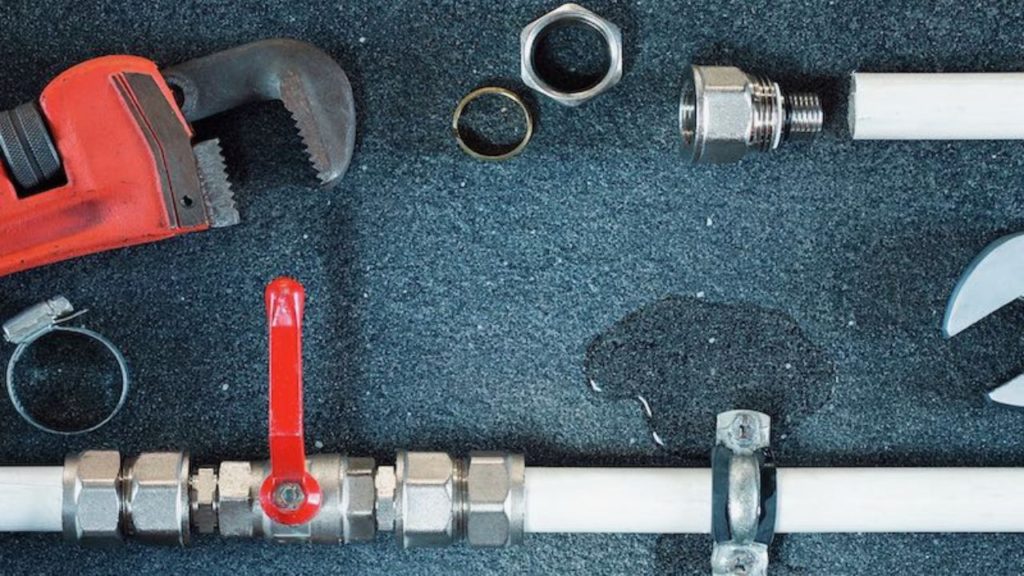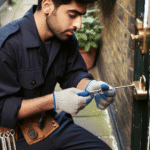Identifying leaks before they become more serious can help mitigate significant water damage to your property. You can also prevent bills from amounting to thousands of dollars. Knowing which areas to check for potential problems can be quite useful, and here are some of the common leaks in residential spaces:
Washing machine leaks
Washing machines have water inlets tubes and drainage hoses. Constant vibrations during wash cycles may first affect the water hose connection. If the hose is not worn out, all you have to do is tighten it.
There are other methods for fixing a leaking pipe, such as applying a plumber’s tape or epoxy paste. But water supply hoses are typically made of black rubber and don’t last for eternity. There’s a risk of them failing as they age, so replacing the washing machine hoses after every five years is usually recommended. Complete failure may cause a big mess and costly water damage.
Should you replace the washing machine hoses by yourself? The task is best handled by a local plumber from team emergency plumber, because there might be water in the pipes as they disconnect the washer. The plumber can also examine internal hoses during the repair, checking for any signs of damage and other hidden leaks. It may be necessary to replace worn-out or seals.
So every time you notice puddles of water beneath the washing machine, take this issue seriously and get professional help to mitigate any water damage.

Air conditioning (AC) leaks
Where exactly does water form in the air conditioner? Water condenses on the evaporator coils found inside the house due to contact with warmer indoor air. As the air cools down, the water condenses on the coils. The small droplets of water cannot simply remain on the evaporator coil. That’s why your air conditioning unit has a drain pan connected to a drain line. The most common cause of AC leaks is a clogged drain line. Plumbers can help unclog it, but there are other ways to do-it-yourself such as using a wet vac.
A dirty air filter can contribute to excess condensate. That’s because it restricts airflow over the evaporation coil. In turn, the coils become too cold, causing more condensate to collect in the drain pan and overflow.
Toilet leaks
You can check for leaks around the toilet bowl that may indicate cracks. Another common issue is a constantly running toilet that affects millions of homes. It’s often caused by a worn-out flapper and may be easily remedied by replacing the toilet tank’s internal components. You should also check for leaks on the stop tap or toilet flex hose connection.
Slab leaks
Slab or foundation leaks refer to any leaks in pipes buried under the home’s foundation. Several things can contribute towards slab leaks, including excessive pressure, soil movements, earthquakes, or corrosion. You should hire a professional plumber or leak detection company in San Clemente to pinpoint the slab leak. The plumber should use non-invasive techniques for detection and repair.
Drain and water supply leaks
Your drainpipes and main sewer line are also prone to leaking. Given the sensitive nature of wastewater, the leaks may cause sanitary disasters and health issues.
Tree root intrusions may also pose a problem to the main sewer line, leading to blockages and dirty water backup. So, regularly inspect your drain pipes for any leaks. You can also guard against aggressive tree roots by locating trees up to 20 feet away from the home’s foundation.
Water supply pipes may have leak problems as well. Start checking for water supply leaks right from the main meter. Ensure that the meter is not dripping, as even small drips on your side of the meter can contribute towards a higher water bill. You should also check for any silent leaks with indoor pipes. Look for warning signs such as wet spots, musty smells, mold, and mildew growth. You should also be active in preventing any frozen pipe incidences as they can cause cracked pipes leading to leaks.

Water heater tank leaks
The water heater may leak from two main places. It may leak from the drain valve if it’s loose or broken. You can resolve loose connection problems by tightening the knob with your hand. You may also notice leaks emanating from holes on the walls of the water heater tank. It will be a much more expensive repair. That’s why it may even make more sense to replace the entire unit.
Faucet leaks
Do you have a faucet that keeps dripping even after tightening the knob? Well, you may have a faucet leak that you can resolve by changing the internal components or replacing the tab entirely. You should also check for pipe corrosions, worn-out plumbing connections, or damaged seals under the sink.
It’s possible to resolve faucet leaks without the intervention of a plumber. But if you don’t have the experience or knowledge, you should just get help from a seasoned professional.






